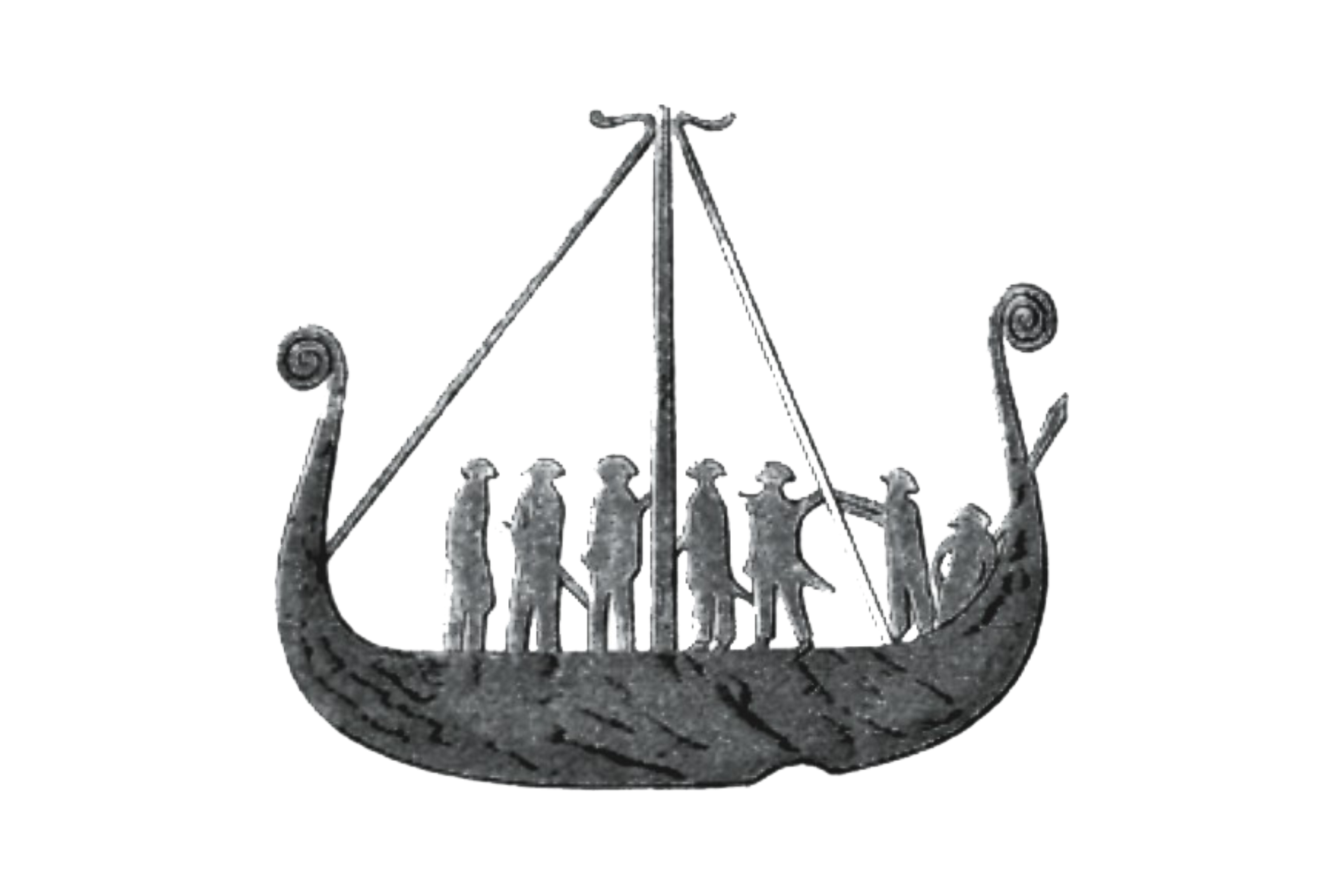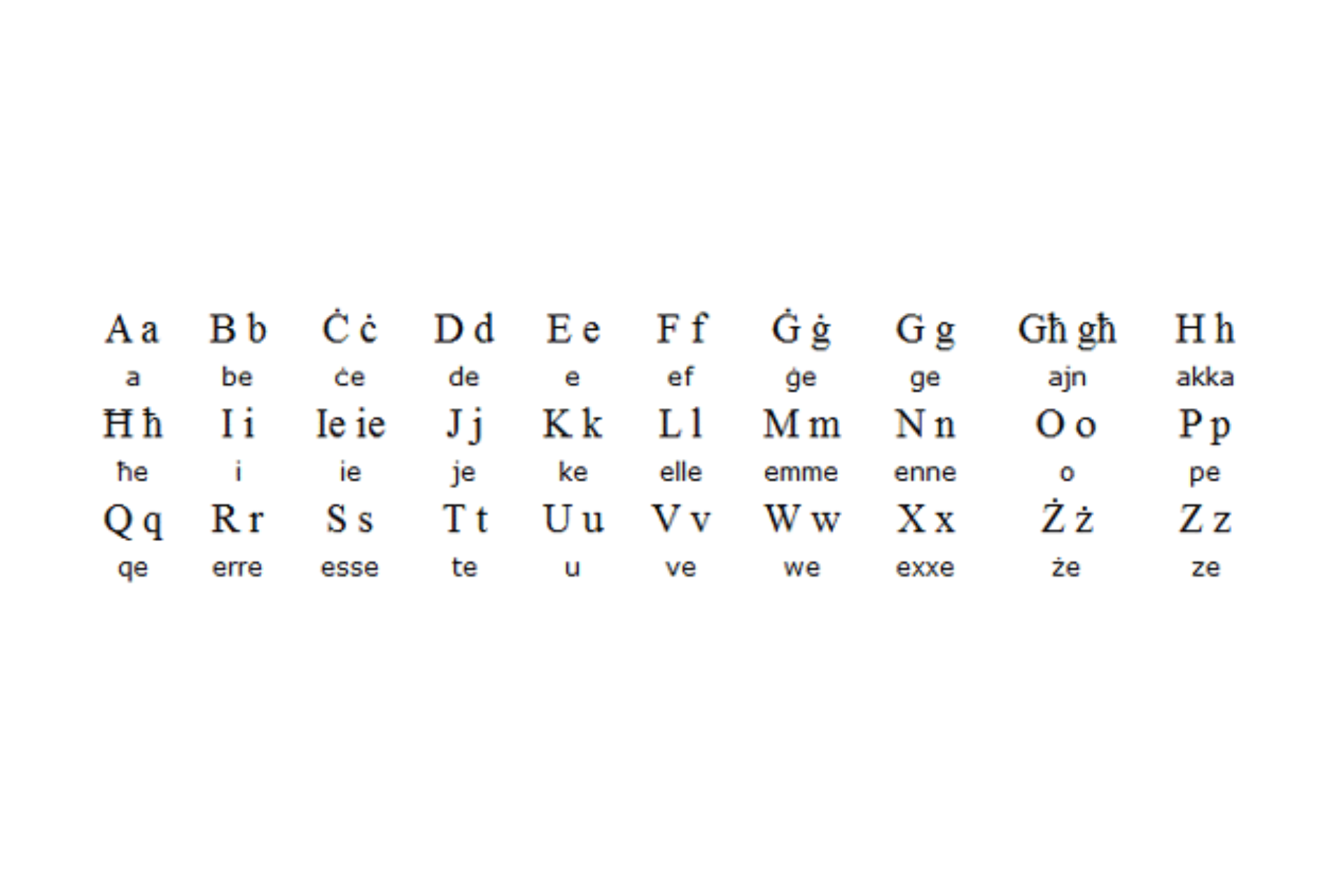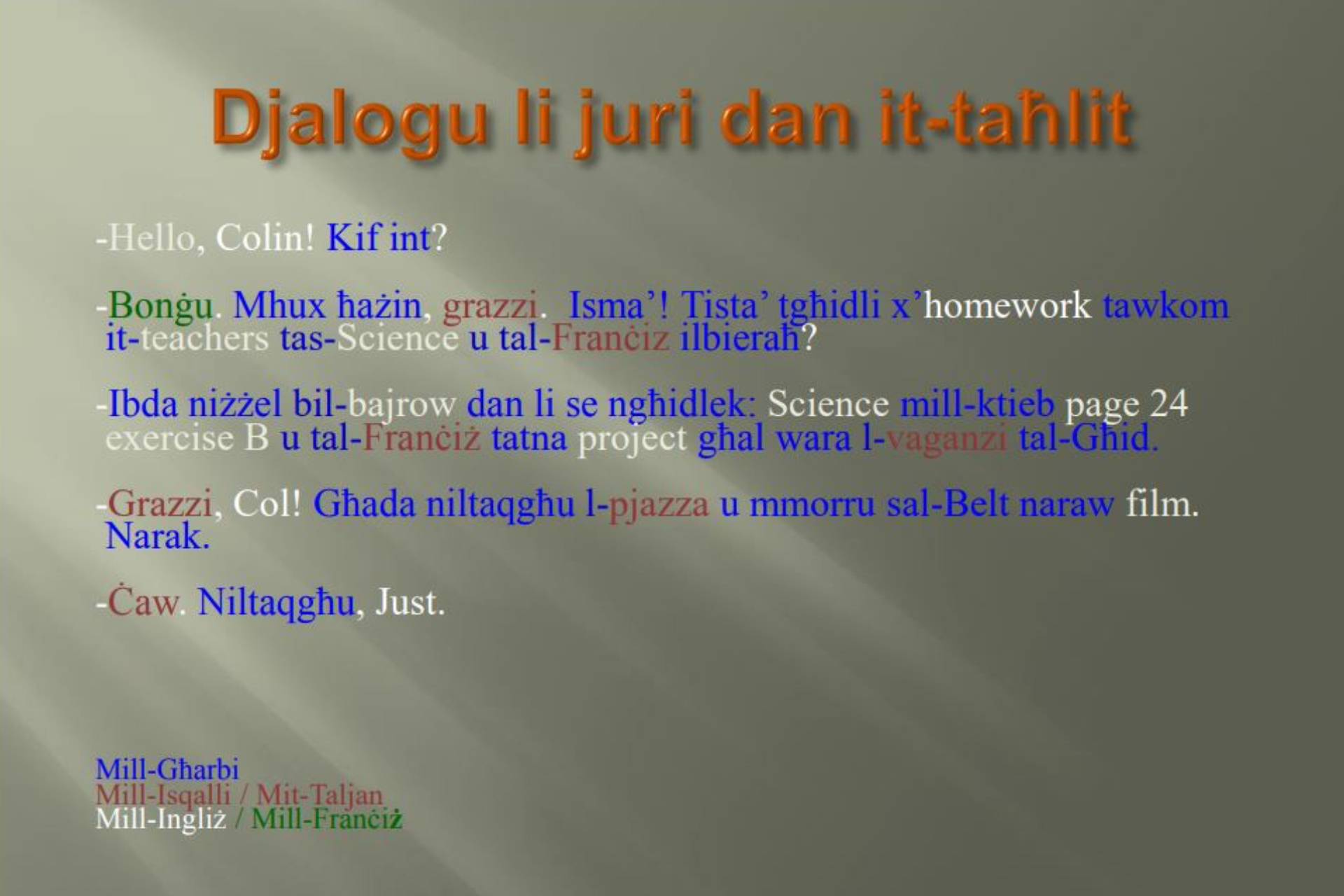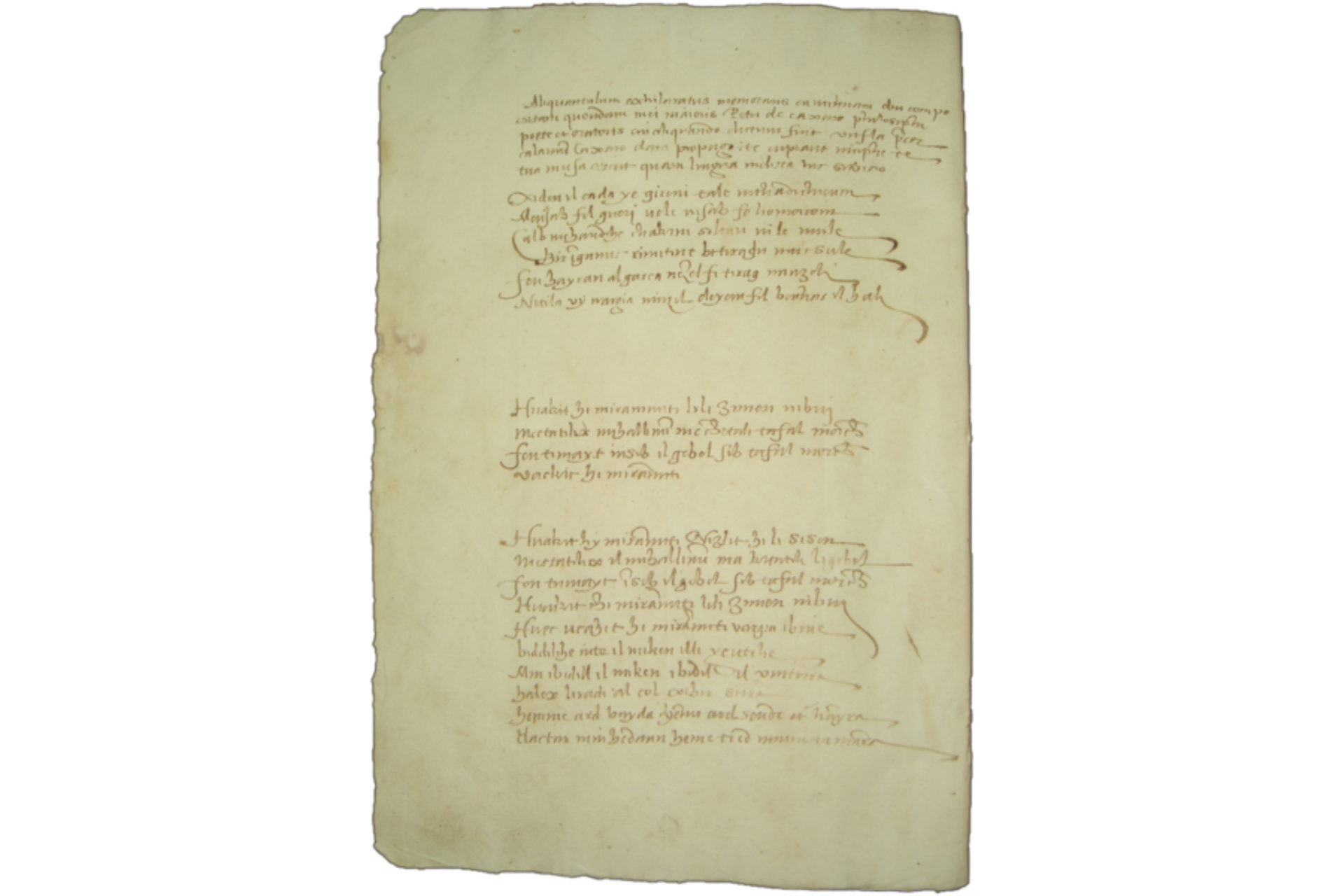One Mighty Maltese Language: the only Semitic-based language that's written in a Latin script
by Tiziana Micallef

No matter if you're a Maltese national or a foreigner, the Maltese language has an equally fascinating charm on anyone. Whether it's about the enriching sounds that make it up, the way it's written, its incredible history or other elements, the Maltese language is definitely mighty.
Although spoken by a relatively small population when compared to other languages, the Maltese language is actually spoken by more than half a million people. True, mainly within the perimeter of our tiny islands, but it's also still active in Australia, Canada, the United States, the UK, Belgium and Luxembourg among others.
The Maltese language is a one-of-a-kind language boasting unique qualities, and it's only by taking a closer look at its origins and evolution through the years that one is able to appreciate it and understand this very particular Semitic language of ours - once considered a dialect!
Maltese Language Profile
As per the Constitution of Malta, the Maltese language is the National language of Malta and Gozo, whereas Maltese and English are the official languages.
In 2004, when Malta joined the European Union, the Maltese language became one of the official languages within the Union as well. This means that Maltese can be spoken in the different EU institutions such as the European Parliament and the Council, whereby any meetings and documents have to be interpreted or translated into Maltese respectively.

But, moving very way back in time, we'll go through (in short) some of the stages in history which led the Maltese language to evolve into the tongue spoken nowadays.
The Phoenician Language
The history of the Maltese language is inextricably linked to the list of conquerors who ruled Malta during different periods - attracted mainly by the island's geographical and strategic position in the Mediterranean Sea.
From the prehistoric stages, at around 5900 BC and ending in 700 BC with the conquest of the Phoenicians, Malta has always been a place of settlement for different kinds of populations. It is believed that the basis of the Maltese language started taking shape actually with the Phoenicians' conquest, which was a Semitic-speaking population deriving from the Levant region of the eastern Mediterranean where modern Lebanon and coastal Syria are nowadays located.

A valuable treasure which puts light on the language used by the Phoenicians is certainly the Cippi of Melqart - two ornamental marble pillars that were discovered in the late 17th century in Tas-Silg near Marsaxlokk. Featuring bilingual engravings in the Ancient Greek and Phoenician alphabet, these Cippi engravings paved the way for understanding better the Phoenician language and progressively the initial origins of the Maltese language.

Grand Master Emmanuel de Rohan gifted one of the cippi to Louis XVI in 1782 and is currently showcased at the Louvre in France. The other cippus can be appreciated at the National Museum of Archeology in Valletta.

Following the Phoenicians' fall to the Roman Republic or Byzantines in 218 BC, the Phoenician language continued to develop further through the influences of other invaders that continued to follow.
After a siege of 870 AD between the Byzantines and the Alghabids - of which the latter were the victors for the conquest of what we nowadays refer to as Mdina, Malta may have been sparsely populated for a few centuries. It was in the 11th century that Arabs repopulated Malta. These Arab settlers originated from Sicily, spoke Siculo-Arabic and remained on the islands for over 400 years. Nonetheless, during this time, the islands were hugely influenced by the Arabs' architecture, food, and language as their biggest mark.

It was with the invasion by the Norman County of Sicily in 1091 that the islands saw the expulsion of Arabs completely (Muslims). As now part of the Kingdom of Sicily, Christianisation kicked off through various means on the islands - one of them being the isolation of the vernacular language from its Arabic source.
Maltese Language As A Latinised Semitic Language
While the Siculo-Arabic language in Sicily was eventually replaced by Sicilian, the vernacular language in Malta continued its path alongside Italian - the new language influence at the time. Therefore, what was once a Semitic dialect started to gain its own identity by building on its Semitic foundations to evolve into a more complete spoken language with Italian and Sicilian influences, mainly. Such influences are evident in the Maltese language morphology - how words or part of them are structured, such as prefixes, suffixes, root words and other linguistic elements.

With the Christianisation of Malta, which started during the reign of the Kingdom of Sicily, the Maltese language went through a process of Latinisation. This has made the Maltese language the only Semitic-based tongue written with a Latinised alphabet, even though a third of the language vocabulary has Semitic origins.
The British Influences
Following the Kingdom of Sicily's conquest, Malta continued to fall under other conquerors. Automatically, with every new conqueror came along additional new influences, particularly language-related ones. Rulers included the Aragonese (the Spanish), the Order of St John, the French and ultimately the British Empire in 1800. With its very long reign, lasting until 1974, when Malta became officially a Republic State; British language influences on spoken and written Maltese were definitely many and automatic.
As a living tongue, Maltese absorbed different linguistic elements from each of its rulers throughout the years. Such influences have been enshrined in the Maltese language of today. No wonder the astonishment of a foreigner listening to a Maltese native speaking. Listening to a short conversation between two Maltese speakers may feel like going around different parts of the world in just a few minutes!

The Language Issue (Il-Kwistjoni tal-Lingwa)
It's interesting to know how Maltese was not recognised as the official language of Malta and Gozo until 1934. Up until World War I the Italian language was officially the language of the Maltese Islands as a State and also of the Church. What happened before, you might ask?
From 1850 till 1930 the islands were stormed by the Language Issue. In simple words, this involved heavyweight clashes between pro-Italian language supporters and pro-English language supporters to determine which of the two languages had to be recognised as the official language of Malta. Funnily enough, during this period Maltese was never taken into consideration - nicknamed il-lingwa tal-kcina, the Maltese language was mainly associated with low-class people and was mainly used as a spoken language. For communication in writing, the Italian language was used mostly.

Among well-known names who left their mark during The Language Issue included Dun Karm Psaila, Malta's National Poet. Despite having expressed the importance of English and Italian, he had underlined the importance of not eliminating the Maltese language from the whole picture. In the end, in 1934, English and Maltese became the two official languages of the Maltese Islands. When Malta became an Independent State in 1964, this language pair was officialised once again in the new Constitution. The Maltese language became the National language, with the English language as the second official language.
The Kantilena
While going through the long list of rulers, you cannot truly appreciate the Maltese language without mentioning Il-Kantilena. This piece of valuable text is the oldest known literature written in the Maltese language and is attributed to Pietru Caxaro - a Maltese philosopher and poet, born most likely in the early 15th century. It was only on 22 September 1966 that this work of art was discovered by Godfrey Wettinger and Michael Fsadni O.P.
The true value of the Kantilena lies in the fact that it's not only written in Latin script Medieval Maltese, but it is a very early form of old Maltese that showcases the real proximity to the Sicilian-Arabic spoken in Sicily at that time with very few Romance languages influences. In fact, the text contains many Arabic morphemes and only 2 Romance words - 'vintura' (luck/fate) and 'et' (and). Generally speaking, early Maltese texts contained very little non-Semitic vocabulary. However, it is thought that the language used in the Kantilena still doesn't reflect the generally spoken language (mainly with Arabic influences) of the common people. It is thought that the language used in the Kantilena reflects a more formal way of speaking used by the elite class as a way to please the ruling Kingdom of Sicily of the time.

Today, this masterpiece of the Maltese language history is carefully preserved at the Notarial Archives in Valletta, after being recorded by Brandano (Caxaro's nephew) in his notarial register dated December 1533 - May 1563.
Standardising Written Maltese
For centuries, the Maltese language was mainly the spoken tongue of the common people. It was thanks to the first efforts made by philologists and academics like Mikiel Anton Vassalli at the end of the 18th century that the Maltese language started to gain a spotlight. Born in Haz-Zebbug and referred to as the Father of the Maltese Language, Vassalli worked hard to standardise written Maltese. Building on the huge work that had been carried out on the first grammar by another grand author, Canon Giovanni Pietro Francesco Agius de Soldanis, Vassalli focused on purifying the language of the Italian influence to push it as a national language.

Based on solid and scientific foundations, Mikiel Anton Vassalli managed to publish his first three essential works about the Maltese language - L-Alfabett Malti (1790), whereby he created a system of orthography for the Maltese language; il-Mylsen (1791), a Maltese grammar in Latin, and Ktieb il-Kliem Malti (1796). The latter, a dictionary better known as il-Lexicon, is considered one of his most important publications in which Vassalli had managed to gather around 18,000 words in Maltese. Through this piece of work, Vassalli didn't just want to promote the Maltese language alone. As a political driver, his belief was that knowing your native language was the key to developing oneself in all possible areas to achieve a complete national identity. The Maltese language had to be the main driver towards the acquisition of democracy.

The Modern Maltese Language
Vassalli's legacy left a big impact on authors and academics that followed in his footsteps to elevate the status of the Maltese language and its literature. From poets and authors to linguists and researchers, the interest in the Maltese language grew more and more.
Back in 1920, Malta saw the inception of the first regulatory body responsible for the Maltese language and its literature - L-Akkademja tal-Malti, initially named L-Ghaqda tal-Kittieba tal-Malti, was founded by Guze Muscat Azzopardi, Frangisku Saverju Caruana, Dun Karm Psaila and Ninu Cremona among others.

The post-War years, in 1967, saw the establishment of Moviment Qawmien Letterarju. This avant-garde literary movement included protagonists like Oliver Friggieri, Frans Sammut, Alfred Sant, Lino Spiteri and other heavyweight poets and authors whose original literature publications helped (and continue to help) to raise awareness about the important value of the Maltese language.

Today, the Maltese language is widely spoken and used in different types of media. Nonetheless, its development is constant, especially alongside English language influences.

Over the past years, with the boom in technology and the internet, the English language remains widely spread within the Maltese language with new words infiltrating its Semitic-based grammar such as issejvja, iddawnlowdja, ifformattja and many many others.
The Maltese language is here to stay, no matter what one says! Every individual or organisation from the past and also current ones, such as, among others, Il-Kunsill Nazzjonali tal-Ilsien Malti, who have had a role in raising awareness about the importance and value of the Maltese language deserves nothing more than true admiration for their stellar work and dedication.
If you want to discover more about the rich history behind the Maltese language and even get to know it better it's worth paying a visit to your closest bookstore.
Learn more about Maltese culture in Yellow's Culture Section here.



